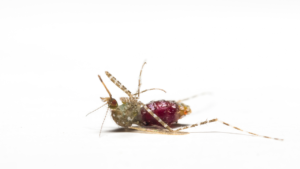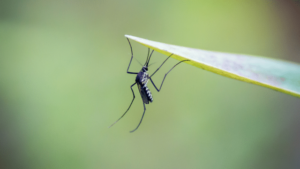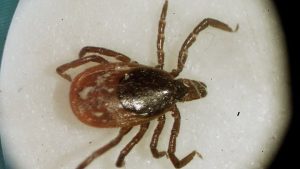The bugs are out in full force as the weather heats up, and some are more welcoming than others.
The dreaded tick is one of the most hated pests in the world, but it’s not the only one. But not every creature that resembles a tick is a bloodsucker.
However, how can you tell ticks apart from other, similar bugs?
A tick is the smallest of these similar-looking insects, that may yet grow to be as large as a sesame seed or a blueberry!
In Ontario, these are some of the most common tick impersonators.

Spider Beetles
Spider beetles are small insects that closely resemble spiders in appearance, yet are completely safe for people to handle.
There are two lengthy extensions near their heads that mimic legs and lead many to believe they are spiders rather than beetles, even though they only have six legs.
For a more spider-like look, the spider beetle has a spherical body with a smooth carapace (outer shell). The Mezium americanum, or American Spider Beetle, is the most common species of spider beetle in North America.
The Smooth spider beetle and White-marked spider beetles are two other options.
As long as the correct circumstances exist, spider beetles aren’t regarded as a major pest, but their propensity to devour vast quantities of food makes them a nuisance.
It’s possible that when this occurs, they’ll find their way into food processing facilities like restaurants or retail establishments. In addition, they are readily transported and may hide in cabinets and pantries.

Harlequin Cabbage Bug
In the spring and summer, if you have a backyard cabbage garden, you’re likely to see this black-and-orange pest. Even though it’s pretty to look at and a nuisance when it comes to your garden, it’s a harlequin cabbage insect.
Fortunately, it isn’t a tick!
The harlequin bug has six legs and two long antennae, making it an insect rather than an arachnid-like tick.
Experts believe that mowing your lawn often in the spring and summer is an effective approach to control the proliferation of this bug if you happen to encounter it.

Larder Skin Beetle
Even though these beetles have a strong appetite, unlike ticks, these beetles aren’t interested in humans.
The black head and brown body of these insects distinguish them from other beetles. Because they are so little, they are frequently mistaken for ticks.
They don’t feed on human blood or bite people, although they have been known to inadvertently eat the skin. The red and painful blisters they leave behind on the skin eventually fall off and are gone.

Head Lice
These parasites are similar to ticks in that they feed on people, although they tend to be much smaller and harder to see.
It is usual to find them in human hairs, but they may also be found on the feathers of birds. They don’t have wings, are considerably smaller than a tick, and are translucent in appearance.
There are no life-threatening infections like Lyme disease carried by head lice, unlike ticks.
They will, however, make your head very itchy, resulting in significant discomfort, particularly in hot weather.

Deer Flies
It’s very uncommon for people to mix deer flies with fleas, flies, and even ticks!
The Deer Fly is a blood-sucking parasite, like the horse fly.
When the weather becomes warm, they come out and look for food by detecting movement, color, or the release of carbon dioxide.
As a result of their preference for wet environments, such as swamps, wooded ponds, and streams, these pests seldom infiltrate dwellings.
Deer flies inflict painful bites with their sharp mouthparts, and although bites usually do not have long-term repercussions, some persons might have allergic responses as a result of the bites.
Tularemia, a disease carried by Deer Flies, may be transmitted to people by their bite.
Common Weevil
There’s nothing to be alarmed about this brown weevil. When inspected under a microscope, it looks nothing like a tick, with just six legs, three body parts, and a stubby set of antennae.
Adult ticks have eight legs, two body sections, and no antennae in contrast.
Cockroach Nymphs
A nickname for cockroach nymphs is “Brown Banded Cockroaches” because of their light brown hue and white banding.
These critters may be found mostly on the subfloor, walls, and beneath beds.
When they’re young, they seem eerily like ticks, with their light brown, translucent bodies, but as they get older, they become reddish-brown.
Fortunately, they don’t eat people (or blood for that matter).
Are you concerned about ticks in Ontario and preventing yourself and your loved ones from various tick dangers?
Contact Mosquito Toronto now and let the pros reclaim your backyard from harmful bugs, pests, mosquitos, and ticks.
.


